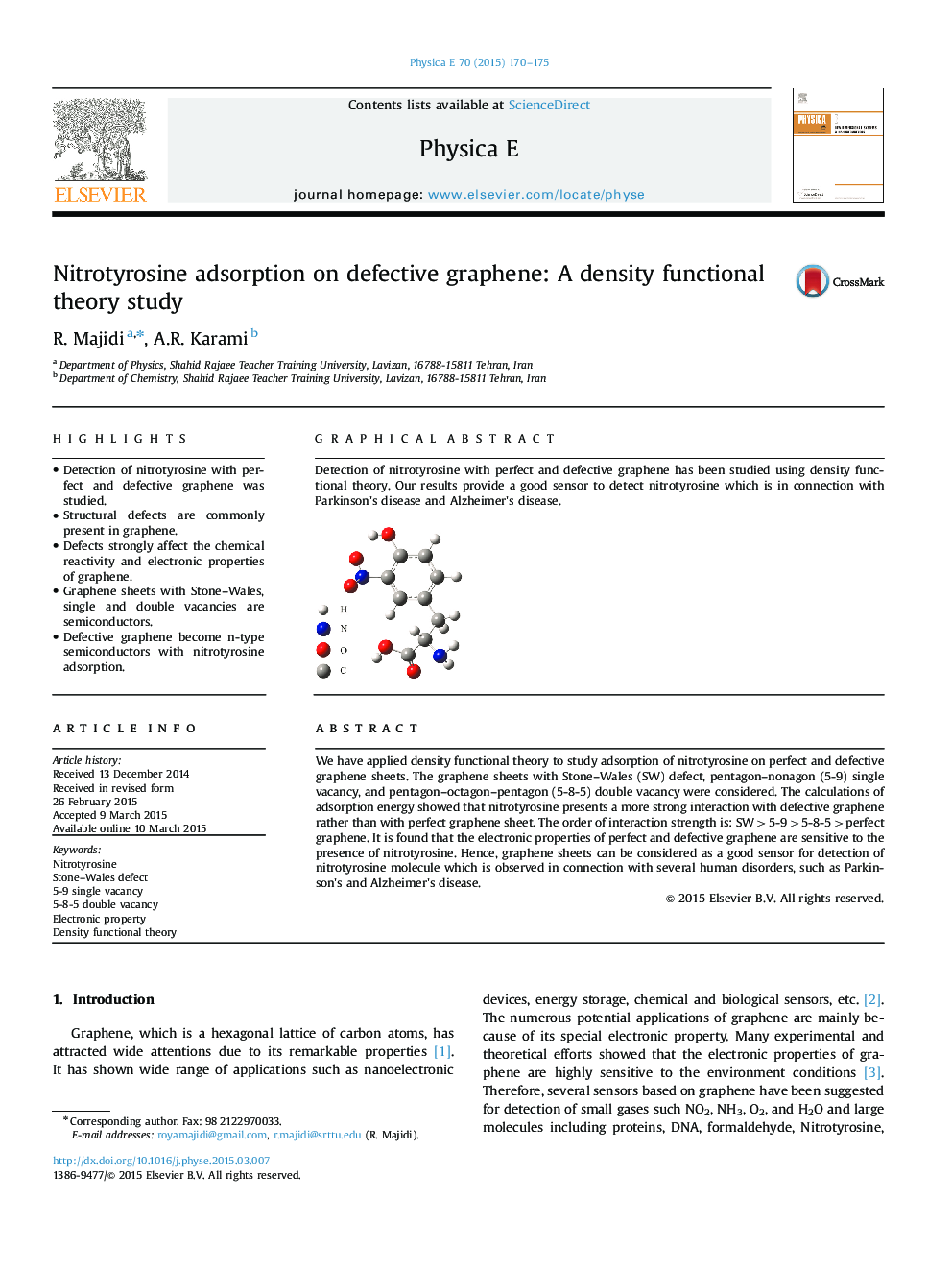| کد مقاله | کد نشریه | سال انتشار | مقاله انگلیسی | نسخه تمام متن |
|---|---|---|---|---|
| 1544103 | 1512879 | 2015 | 6 صفحه PDF | دانلود رایگان |
• Detection of nitrotyrosine with perfect and defective graphene was studied.
• Structural defects are commonly present in graphene.
• Defects strongly affect the chemical reactivity and electronic properties of graphene.
• Graphene sheets with Stone–Wales, single and double vacancies are semiconductors.
• Defective graphene become n-type semiconductors with nitrotyrosine adsorption.
We have applied density functional theory to study adsorption of nitrotyrosine on perfect and defective graphene sheets. The graphene sheets with Stone–Wales (SW) defect, pentagon–nonagon (5-9) single vacancy, and pentagon–octagon–pentagon (5-8-5) double vacancy were considered. The calculations of adsorption energy showed that nitrotyrosine presents a more strong interaction with defective graphene rather than with perfect graphene sheet. The order of interaction strength is: SW>5-9>5-8-5>perfect graphene. It is found that the electronic properties of perfect and defective graphene are sensitive to the presence of nitrotyrosine. Hence, graphene sheets can be considered as a good sensor for detection of nitrotyrosine molecule which is observed in connection with several human disorders, such as Parkinson's and Alzheimer's disease.
Detection of nitrotyrosine with perfect and defective graphene has been studied using density functional theory. Our results provide a good sensor to detect nitrotyrosine which is in connection with Parkinson's disease and Alzheimer's disease.Figure optionsDownload as PowerPoint slide
Journal: Physica E: Low-dimensional Systems and Nanostructures - Volume 70, June 2015, Pages 170–175
